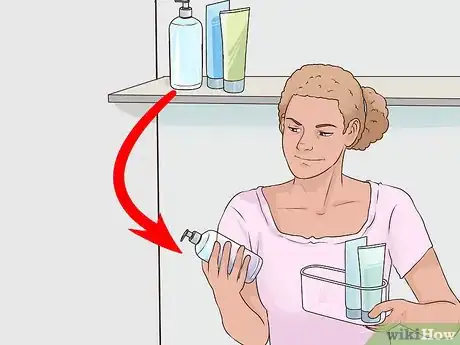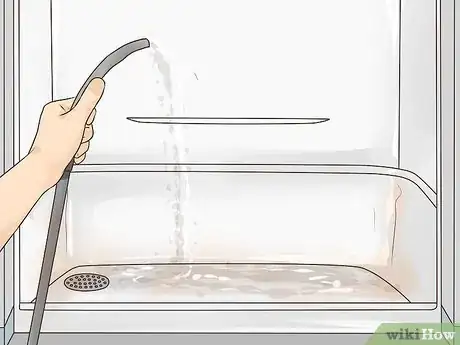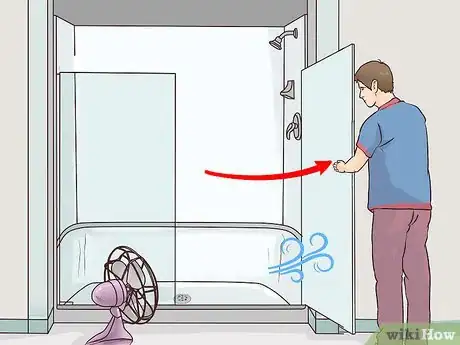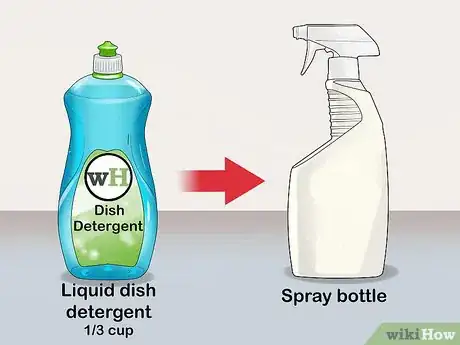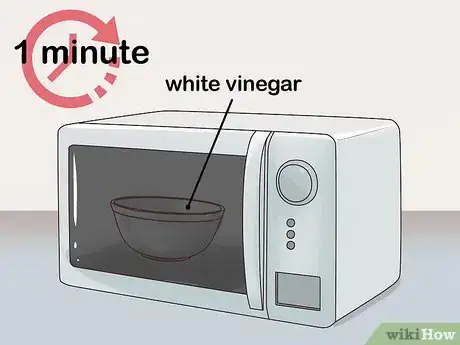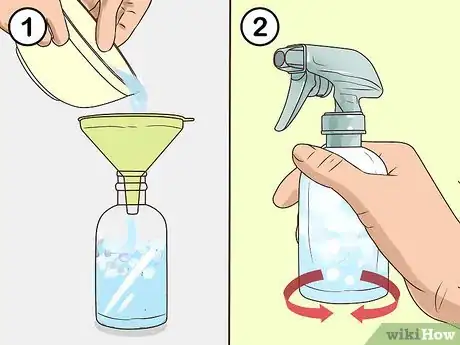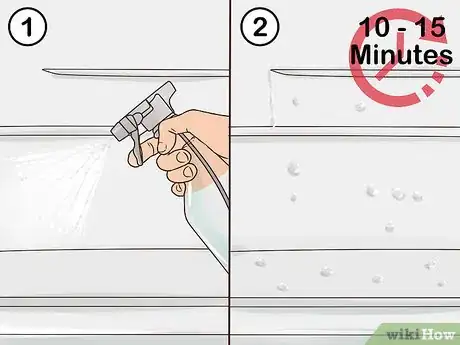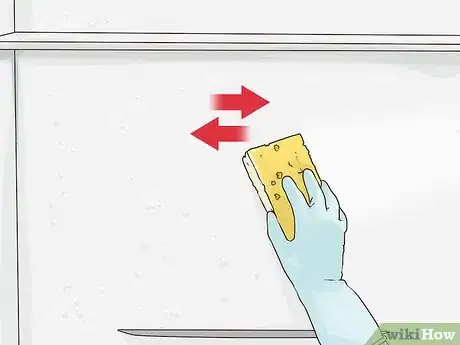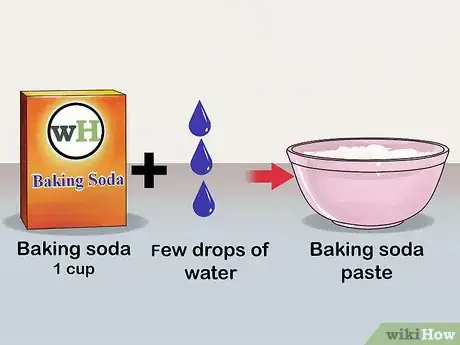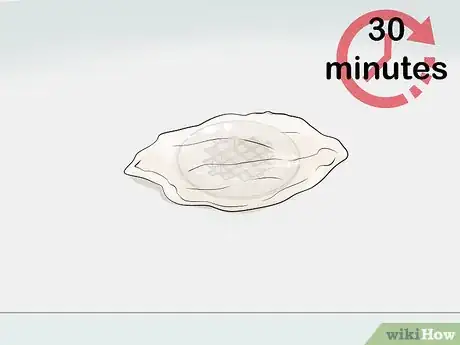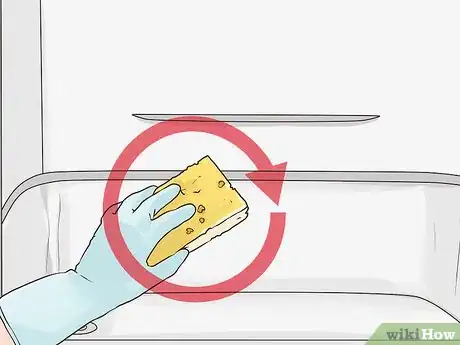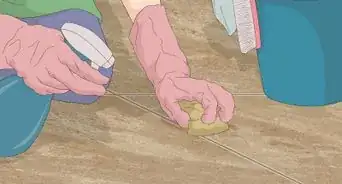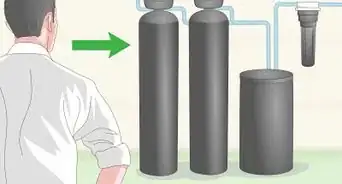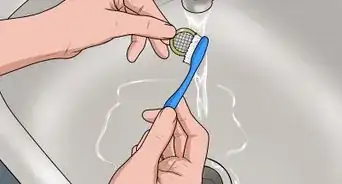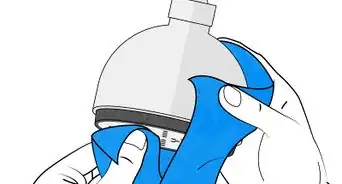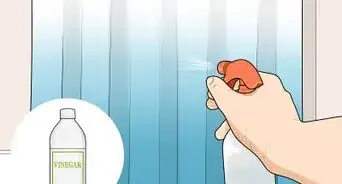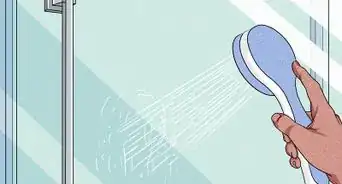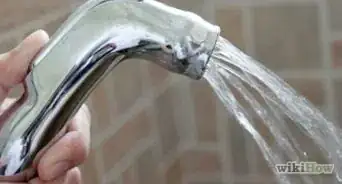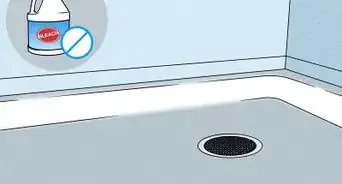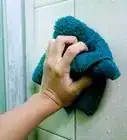This article was co-authored by Michelle Driscoll, MPH and by wikiHow staff writer, Danielle Blinka, MA, MPA. Michelle Driscoll is the Owner of Mulberry Maids, which is based in Fort Collins, Colorado. With five years of experience, her business specializes in cleaning homes and small offices. She holds a Masters in Public Health from the Colorado School of Public Health. Additionally, Mulberry Maids has an A+ rating from the Better Business Bureau.
wikiHow marks an article as reader-approved once it receives enough positive feedback. In this case, 95% of readers who voted found the article helpful, earning it our reader-approved status.
This article has been viewed 115,088 times.
Stepping into a dirty shower can make it hard to feel clean. While it may seem like your fiberglass is ruined forever, cleaning your shower is actually a simple process. All you need to restore the shine to your fiberglass shower are a few common household products and time for them to work.
Steps
Preparing the Area
-
1Empty out your shower. Remove all bottles, soap, razors, and accessories from your shower. Wipe down the items to remove any grime that may be transferred back into the shower, especially mildew. Mildew on the bottom of the bottles can immediately rub back onto your freshly clean shower surfaces.
- If you have any empty or worn-out items, throw them away.
- If you have a shower curtain, it’s best to take it down and clean it.
-
2Rinse away any loose dirt and debris. A pre-rinse will ensure that you do not accidentally grind dirt or debris into the surface of your tub. It also allows the cleaning product to work directly on the stuck-on grime.Advertisement
-
3Ventilate the room. Open the bathroom door to prevent the fumes and moisture from building up. Then turn on your fan. If you have a window in your bathroom, open it as well. While you’ll be using a natural cleaning solution, it’s still strong and will release fumes that you’ll want to air out.
Mixing Your Cleaning Solution
-
1Pour ⅓ cup (79 milliliters) of liquid dish detergent into a spray bottle. The dish detergent will cut through the oils and grease that make up your soap scum, making it easier to wipe away the stuck on grime.
- You can use any dish detergent that is formulated to cut through grease.
- If you use too much detergent in your cleaning solution, it will not ruin your cleaner; however, the cleaning solution will be harder to wash away.
-
2Measure out 1 cup (237 milliliters) of white vinegar. In addition to attacking bacteria and mildew, white vinegar is great for clearing away soap scum and lime deposits. While the smell may be off-putting, it evaporates away once the vinegar dries.
- If the smell of the vinegar really bothers you, try adding a few drops of a pure essential oil, such as lemon or orange oil.
-
3Heat your vinegar in the microwave. Set the timer for 1 minute to warm the vinegar. Warm vinegar is easier to mix than cool vinegar, so it will help you create a better cleaning solution.
- You don’t need to boil your vinegar.
- Depending on the strength of your microwave, you may want to warm your vinegar in 30 second intervals to make sure that it reaches a slightly warm temperature rather than getting too hot or not getting warm enough.
-
4Add the vinegar to the spray bottle and mix. Blend the two ingredients using a swirling motion. Continue moving the bottle until they are completely blended. Avoid shaking the bottle because it will cause excessive sudsing. Your end result should be a slightly foamy substance that is lightly tinted the color of your detergent.
- You can increase or decrease the quantity of cleaner that you prepare by adjusting the amount of the ingredients as long as you maintain the 3 to 1 ratio of white vinegar to detergent.
- If you’d prefer, there are several non-abrasive commercial options available that are safe for fiberglass. Check the label to make sure that the product does not contain abrasive cleaning agents or bleach.
Using Your Cleaning Solution
-
1Apply the cleaning solution to your shower. Spray your vinegar-detergent mixture onto the shower and tub surfaces. Allow it to set for 10-15 minutes so that the ingredients have time to penetrate the dried on soap scum, mildew, and mineral deposits.
- If your shower doesn’t have soap scum, mildew, and mineral deposits, then you don’t need to let the product set.
-
2Use a sponge, cloth, or soft-bristle brush to work in the product. Scrub your shower surfaces with your non-abrasive applicator, paying special attention to areas with thicker grime. As you clean, apply additional cleaning solution as needed. For example, if your cleaner dries before you get to that section, you can apply additional cleaner.[1]
- Do not scrub with hard-bristle brushes, scouring pads, or metal pads because they will scratch your fiberglass.
-
3Rinse with cold water. Use a cup to splash cold water onto all of the surfaces to remove the cleaning solution and the grime. You will likely need to rinse areas more than once to remove all of the product.[2]
- If you have a handheld shower head, you can use it instead of a cup.
Removing Stubborn Soap Scum
-
1Make a baking soda paste. Pour 1 cup (237 milliliters) of baking soda into a bowl. Add a few drops of water at a time, blending until you have a paste. Your paste should be spreadable but still sticky enough to stick to shower surfaces.[3]
- Alternatively, you can sprinkle baking soda directly on the soiled area then spray it with vinegar in a spray bottle. Let it sit for 15-20 minutes, then scrub the fiberglass with a cloth or sponge.
-
2Apply the paste to stubborn soap scum. Smoothe on a generous amount of the paste to any remaining soap scum, which includes tub rings or rings around the drain in your shower pan.[4]
- Pretend you are icing a cake. Your paste should be spread on in a thin layer.
-
3Allow the paste to sit for 30 minutes. The baking soda needs time to break down the soap scum. While it dries, avoid spraying water or other cleaners in the shower.[5]
-
4Scrub the shower with a sponge, cloth, or soft-bristle brush. Add a little water to the paste to re-moisten the baking soda. Make tight, circular movements with your scrubber as you work in the paste.[6]
-
5Wash away any remaining paste. Use your cup to splash water onto the paste. With a clean cloth, wipe away the baking soda. Rinse the cloth frequently to remove the baking soda residue.[7] When all of the baking soda is gone, do a final rinse with cold water.
- If you have a handheld shower head, you can use it instead of a cup.
Warnings
- Avoid abrasive cleaners or scrubbers as these may scratch your fiberglass.⧼thumbs_response⧽
- Fiberglass scratches easily, which diminishes its shine and allows dirt and grime to build up in the scratches.⧼thumbs_response⧽
References
- ↑ https://www.hometips.com/repair-fix/bathtub-fiberglass-cleaning.html
- ↑ http://removeandreplace.com/2014/12/18/how-to-make-your-old-fiberglass-bathtub-or-shower-look-new/
- ↑ https://www.hometips.com/repair-fix/bathtub-fiberglass-cleaning.html
- ↑ https://www.hometips.com/repair-fix/bathtub-fiberglass-cleaning.html
- ↑ http://removeandreplace.com/2014/12/18/how-to-make-your-old-fiberglass-bathtub-or-shower-look-new/
- ↑ http://removeandreplace.com/2014/12/18/how-to-make-your-old-fiberglass-bathtub-or-shower-look-new/
- ↑ http://removeandreplace.com/2014/12/18/how-to-make-your-old-fiberglass-bathtub-or-shower-look-new/
- ↑ https://www.hunker.com/12156299/how-to-clean-a-fiberglass-shower-pan
- ↑ https://www.hunker.com/12156299/how-to-clean-a-fiberglass-shower-pan
About This Article
To clean a fiberglass shower, start by rinsing away any loose dirt and debris to ensure that the cleaning solution will work directly on the stuck-on grime. Next, spray the shower and tub surfaces with a solution made from ⅓ cup of liquid dish soap and 1 cup of white vinegar that’s been heated for 1 minute in the microwave. Let it sit for 10 to 15 minutes, then scrub the surfaces with a sponge or soft-bristled brush. Finally, use a cup to splash cold water onto the surfaces to remove the cleaning solution and the grime. For more advice from our House Cleaning reviewer, including how to remove stubborn soap scum with a baking soda paste, keep reading!
